Rocky Mountain Institute
A non-profit consulting for a municipality needed to model a mixed-use residential and commercial building with a large electrical load that could be...
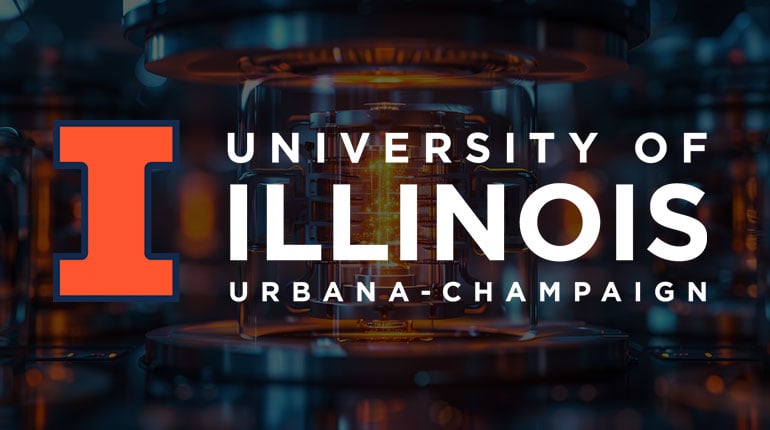
This report explores the decarbonization of the University of Illinois Urbana-Champaign (UIUC) campus microgrid through the optimal deployment of Small Modular Reactors (SMRs). The primary objective is to assess the technical and economic feasibility of integrating SMRs, Battery Energy Storage Systems (BESS), and thermal storage into the existing campus microgrid.
Prepared by: T.P. Grunloh, D. Kalinichenko, C. S. Brooks, Nishaant Sinha, Giovanni Maronati, Reynaldo Guerrero, and Michael Stadler
Abstract:
This report explores the decarbonization of the University of Illinois Urbana-Champaign (UIUC) campus microgrid through the optimal deployment of Small Modular Reactors (SMRs). The primary objective is to assess the technical and economic feasibility of integrating SMRs, Battery Energy Storage Systems (BESS), and thermal storage into the existing campus microgrid. The study evaluates various scenarios, including the impact of heat storage, carbon tax, SMR ramp rates, installation costs, and preheating and precooling strategies on the microgrid's performance. The findings demonstrate that SMR integration significantly reduces carbon emissions while maintaining a reliable and cost-effective energy supply. Key results show that under high carbon tax scenarios, SMRs can contribute to up to a 63.5% reduction in CO2 emissions compared to the baseline configuration. The Levelized Cost of Energy (LCOE) analysis suggests that although the initial costs are higher with SMRs, the long-term benefits in terms of decarbonization and energy resilience make them a viable option for the UIUC microgrid. The report concludes with recommendations for future work to enhance the deployment and optimization of advanced nuclear technologies within campus microgrids.
Executive Summary:
Historically, the approach to nuclear energy has been to deploy in gigawatt-scale stations to provide baseload power generation for millions of customers. However, newer designs feature an array of sizes including small modular reactors (SMRs) and microreactors, which may be better suited to the needs of the decentralized future smart grids and microgrids. Microgrids aggregate and integrate renewable generation, storage, and flexible loads within a defined electrical boundary. These systems can operate either connected to the grid or in islanded mode. When grid connected, frequency is synchronized to the macrogrid. When islanded, the microgrid ensures stability from controller (microgrid energy management system). The near simultaneous emergence of microgrids and SMRs offers significant potential advantages to future energy systems.
This scoping study develops insight into deploying SMRs and other advanced nuclear technologies to anchor reliable local grids and, in particular, microgrids. This study uses high quality data from operating generators and actual loads served to perform realistic assessments that demonstrate advanced nuclear as an ideal option for current and future energy needs. The campuses of research universities offer an opportunity to demonstrate the viability of the integration of SMR in the grid. Such deployments are ideal for small units with compressed construction and licensing timeframes.
The University of Illinois Urbana-Champaign (UIUC) campus was used as the demonstration site to analyze micro-reactor systems with actual real-time and historical data for the entire campus generation and loads. The UIUC campus microgrid is a uniquely representative model for distributed energy resources in distribution systems and a true microcosm of the macro-grid. It was chosen as the pilot microgrid for this scoping study due to its diverse power generation sources, existing combined heat and power infrastructure, significant variability in electrical and thermal demand, and detailed real-time and historical power utilization data. Of the total electricity and steam energy used on campus, on average 82% is generated at Abbott Power Plant through the burning of coal, natural gas, and fuel oil. Introducing SMR in the generation mix will considerably reduce emissions, moving towards a net-zero carbon footprint for the campus.
The UIUC campus was modelled on the Xendee microgrid platform - a comprehensive planning and decision-making tool, based on mixed integer linearized optimization with capabilities for modeling over twenty-five generation, storage and load management technologies along with financial and utility tariff criteria. The SMR model inherits features of conventional generation technologies such as unit install costs, minimum loading, and ramp rate limits which are important for baseline comparisons. Uniquely, it integrates a component for modeling nuclear reactors as one of its core capabilities with added features for fuel cost every refueling period, decommissioning cost after the SMR lifetime, option for baseload operation of the electricity generators, electricity and heat output trade-offs and cycling limits.
UIUC Microgrid:
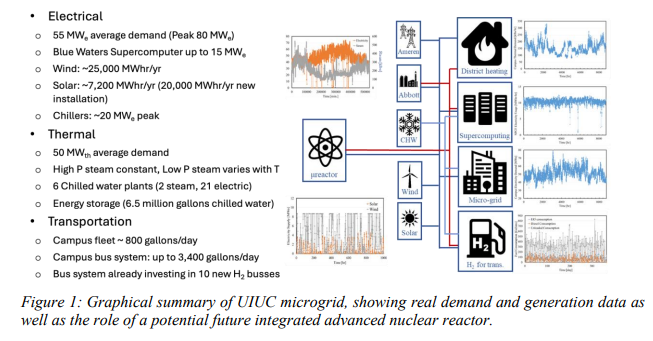
Currently, UIUC’s energy infrastructure is anchored by Abbott Power Plant which is fueled by oil, coal, and natural gas. This Combined Heat and Power (CHP) facility has the primary goal of providing steam for the campus district heating system. Electricity is also generated to improve
energy efficiency. The campus electricity portfolio includes substantial contingents of solar and wind. Generally, any gap in electrical demand between CHP and renewables is filled though engagement with the local macrogrid. However, the UIUC campus has demonstrated the ability to operate in islanded mode when necessary, as a true microgrid.
The UIUC campus energy ecosystem averages approximately 55 MW electricity demand and 50 MW steam demand with daily and seasonal fluctuations. In addition to many residence halls, instructional facilities, experimental laboratories, office buildings, and athletics facilities, UIUC also hosted the Blue Waters supercomputer. This facility regularly drew over 10 MW of electrical power and was cooled by a specialized chilled water system. This project includes high quality data, resolved at least hourly, of energy demand of both standard campus buildings and specialized assets like Blue Waters.
UIUC is also uniquely positioned to optimize the deployment of advanced nuclear on campus. Members of the project teams are actively engaged in licensing activities for a next-generation nuclear reactor sited on campus. Importantly, this unit is intended for integration into the existing campus energy ecosystem. The experience gained – and regulatory outcomes achieved thus far – through this project directly impact the study presented here.
Scoping Study:
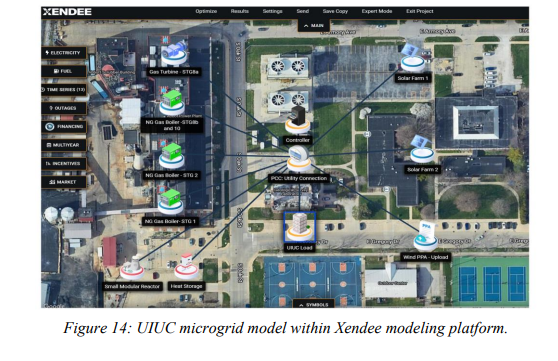
In this scoping study, the existing UIUC campus microgrid, with its state-of-the-art CHP equipment, was successfully replicated within the Xendee modelling framework. Following this, optimizations of various cases with various implementations of a SMR on the UIUC campus were analyzed. When the SMR was installed, it was observed that a CO2 reduction could be achieved, albeit with a large increase in capital cost compared to incumbent fossil fuel technologies. However, reaching zero CO2 emissions without nuclear required disproportionately large investment into new solar photovoltaic to become fully independent of the local.
The scoping study discussed below was developed in two phases. In Phase I, a model of the UIUC grid was built in the Xendee platform. This enabled computation of optimal generation mixes and hour-by-hour dispatch from these sources to meet various campus demands. Data input into the model included aggregated campus energy and steam demand as well as generation from coal, natural gas, wind, solar, and regional grid sources. Crucially, the data used to drive the model was taken from a full year of historical UIUC data and included many scales of fluctuations.
Phase II work targeted optimization and refinement of the model demonstration of the ability to efficiently model a wide range of scenarios. Optimal energy dispatch was computed over a year for various scenarios based on objectives that include economics and decarbonization. The scenarios include a baseline case of UIUC campus as it operates today for comparison. Energy portfolios including a range of SMR power ratings were evaluated, ranging from 10MW to sufficiently large to meet the full steam demand.
A significant portion of the motivation of this effort is the idea that decarbonization is continually growing in priority for energy system operators. Along these lines, it is not unreasonable to expect policy interventions to increase the cost of carbon emissions. Therefore, this study also includes investigation of the level of carbon tax that would render nuclear cost competitive with incumbent fossil fuel technologies.
To summarize, the capability for conducting techno-economic analysis in the Xendee platform was demonstrated in Phase I and used to analyze preliminary scenarios representative of decarbonization options for the UIUC campus. In Phase II, more sophisticated scenarios were developed. New features of the model, in particular improved ability to capture thermodynamics effects, were applied to analyze options for integrating of SMR into campus energy mix and operations.
Key Findings:
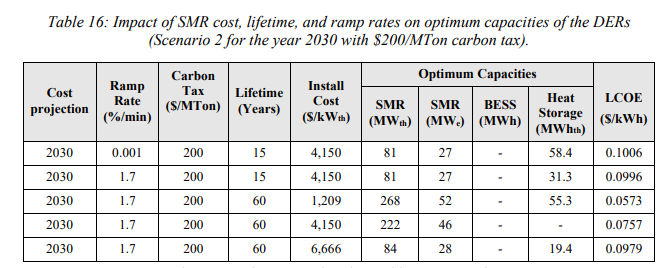
This scoping study established a framework and analytical basis for a campus microgrid with a microreactor. Among the results of this work, the primary findings reinforce that advanced nuclear is a legitimate option for integrating into campus energy systems with aggressive decarbonization goals. SMRs fill a key gap by providing dispatchable carbon free energy in the form of both electricity and usable heat. The new nuclear paradigm of right-sized reactor for a given application suggests in the near term, commercial nuclear technology may be readily available to achieve this integration. Deploying a reactor in a CHP configuration was found to be an effective method for decarbonizing existing district heating infrastructure. It was also found that scaling to fully carbon-free electricity without nuclear required a massive overbuild of renewable generation.
Since advanced nuclear remains in the demonstration phase, it was expected to be more costly than incumbent fossil fuel technologies over the short term. When the UIUC CHP plant was replaced in a scenario by a 158 MWth/42 MWe SMR with heat storage there was a significant CO2 reduction of 85%, but a corresponding large cost increase of 587% due to the SMR installation costs. Findings from a scenario where the objective was to have no utility imports, more solar photovoltaic and battery technology was needed to accomplish the goal to drive CO2 emissions to zero. However, as expected the cost increase was 759.5%. To fully eliminate electrical imports, significant solar is required for when the steam demand is near maximum, but when the steam demand is minimized, there was significant unused electricity as the SMR exports it to the grid.
At the same time, one of the primary benefits of nuclear is its ability to densely produce energy without carbon emissions. The scoping study demonstrated that placing a reasonable value on carbon emissions made nuclear energy directly competitive with incumbent energy sources. Another vector for reducing the cost of a nuclear integration project was to identify methods in which the rating of the reactor could be reduced without sacrificing reliability or resiliency. Onsight thermal energy storage was found to be very effective (charging during low demand/high renewable production; discharge during high demand). This enabled the reactor to be sized against average demand rather than peak demand. In this case, the reactor size reduction was on the order of 20%. Such reduction translates directly to reduced costs. Flexible loads were found to have this positive impact as well. The study found that pre-heating and pre-cooling lead to a tangible reduction in required reactor rating.
The study demonstrated the use of a powerful tool to explore market-driven carbon reduction strategies that are compatible with reasonable deployment vectors for candidate microgrids. Specific applications included the transition of coal to nuclear for microgrids such as UIUC’s, supplementing communities with high renewable penetration, and others which require flexible nuclear operation for reaching zero carbon goals
Future Work:
The effort documented here demonstrated a capability comprised of expertise in nuclear energy and microgrid operations, high quality data, and the Xendee modeling platform that is uniquely positioned to approach integration of advanced nuclear into modern energy systems. These capabilities call upon data sets of load profiles, generation and storage, financial incentives, and emission levels and can be used for scenarios for microgrid planning with advanced nuclear and optimization for economics, decarbonization, resiliency, and other crucial metrics.
The preliminary results reported here represent a solid foundation for future efforts. For example, the developed microgrid model can directly be used to analyze the replacement of coal-fired plants with an SMR without significant disruption and loss of generation capability in generalized settings. In another study, the microgrid model could be used to test the replacement of the fossil fueled plant with multiple small SMRs to ensure resiliency requirements are met.
The modeling and analytics demonstrated can be used for planning the energy transition of the UIUC campus, and others, to a net-zero microgrid over time, as SMR is included in the generation mix with renewables, storage and flexible loads. Further, adding SMR in the microgrid offers opportunity to learn about its capabilities and operational performance interactively as part of a real grid.
The calculations and analytical framework generated from this study are intended to serve as a cross-cutting platform for researching, designing, and optimizing operational strategies for nuclear power as part of aggregated systems of diverse energy sources, applications and users. The platform and methodology are transferable to planning of the deployment of advanced nuclear in the macro-grid.
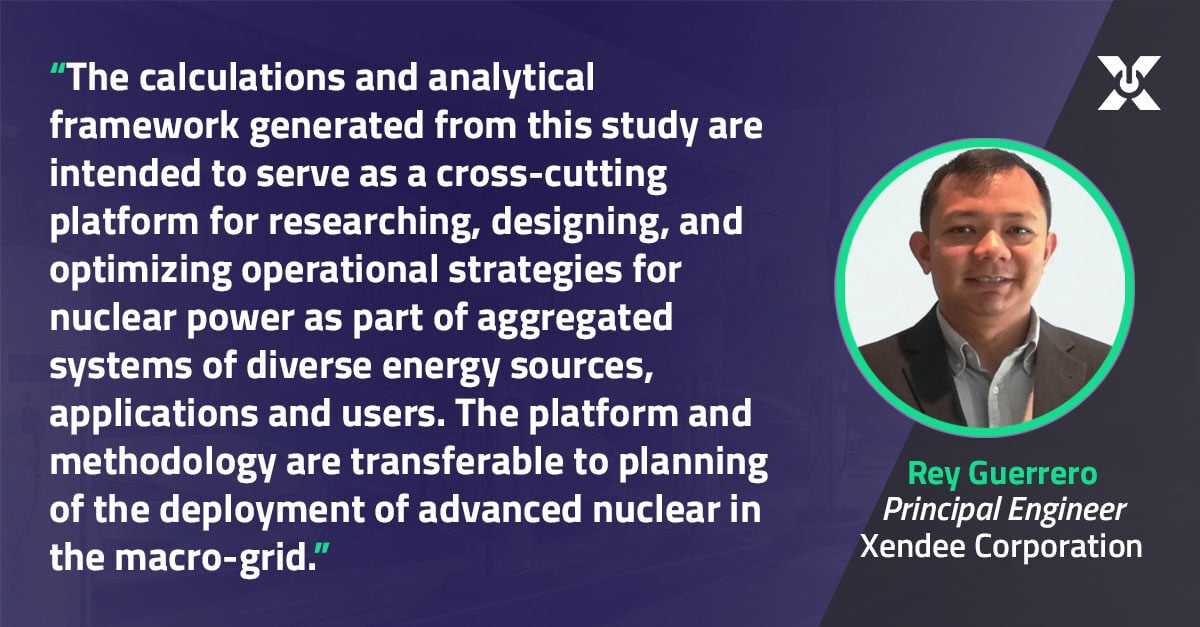
Highlights:
This project simulated the UIUC campus microgrid including aggregated loads from hundreds of buildings and diverse power generation including coal, natural gas, fuel oil, solar, and wind.
The study established the feasibility of deploying advanced nuclear reactors on campuses to meet diverse energy needs including both electricity and steam in a combined heat and power configuration.
Advanced nuclear is a serious option for campuses, and other microgrids, planners to consider to meet decarbonization goals without sacrificing reliability.

A non-profit consulting for a municipality needed to model a mixed-use residential and commercial building with a large electrical load that could be...
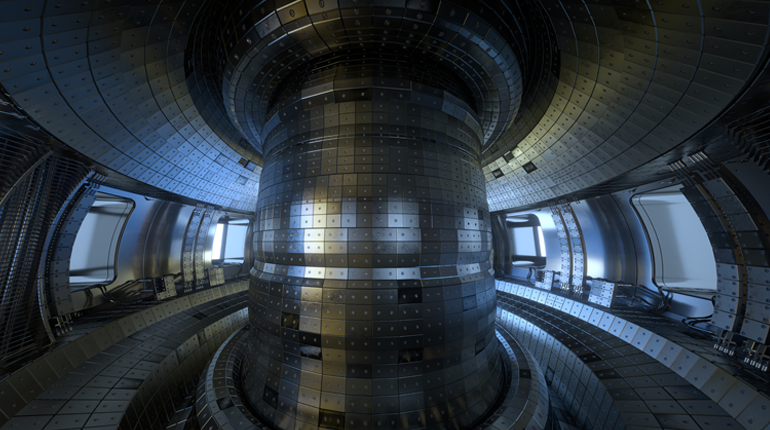
SAN DIEGO–(BUSINESS WIRE)–The landscape of the electricity grid is rapidly evolving, driven by expanding electrification initiatives, renewable...
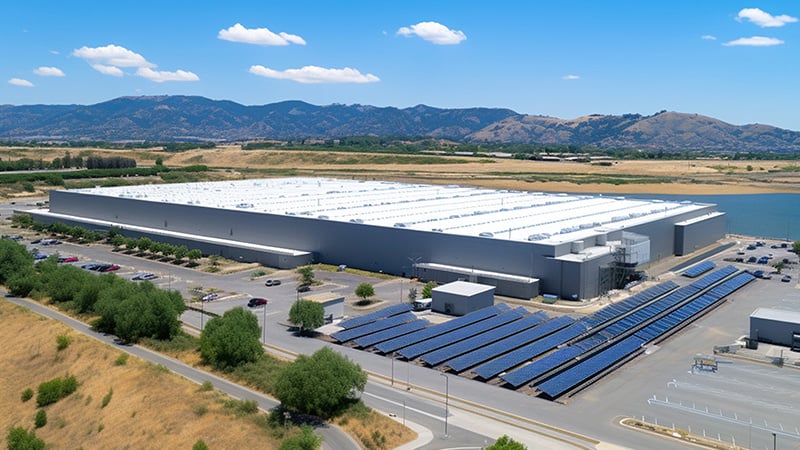
A multi-year optimization approach combining Distributed Energy Resources (DERs) and Small Modular Reactors (SMRs) can significantly reduce energy...